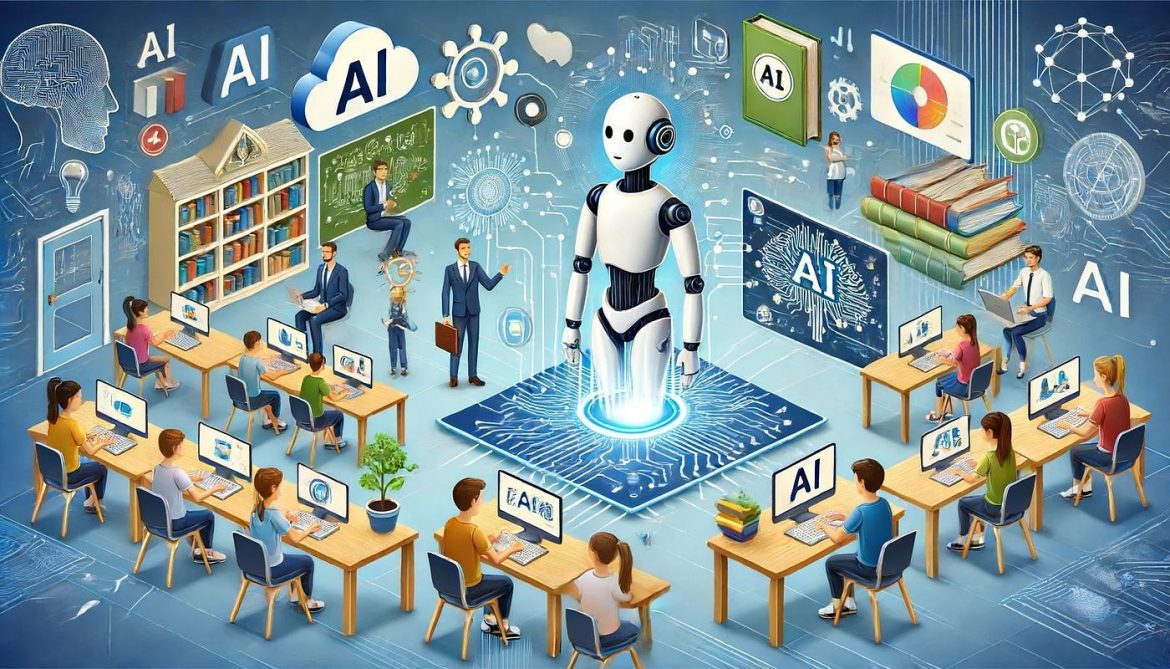In the rapidly evolving landscape of modern education, digital tools and resources have become integral to the learning experience. As we navigate through 2025, the integration of technology in classrooms has reached unprecedented levels, with artificial intelligence leading the charge in transforming how students learn and how educators teach. The traditional educational paradigm is shifting, thanks to innovations that make learning more accessible, personalized, and effective.
Dr. Matt Lynch, an expert in educational technology and innovation, has extensively researched how digital tools can enhance learning outcomes across various demographics. His work, available at education platforms, emphasizes the importance of adapting technological advancements to meet diverse learning needs. As we continue to embrace digital transformation in classrooms, the role of AI has become increasingly significant.
Among the most promising developments in this field is the emergence of intelligent learning assistants. The AI Homework Helper AI Homework Helper has revolutionized how students approach their assignments, offering guidance and support tailored to individual learning styles. Unlike traditional tutoring services, these AI-powered tools provide immediate assistance, allowing students to overcome obstacles in real-time and maintain their learning momentum.
According to recent research from Morgan Stanley, global edtech spending is projected to increase from $250 billion in 2022 to an impressive $620 billion by 2030. This substantial growth reflects the increasing recognition of technology’s value in enhancing educational experiences. As AI systems become more sophisticated, they are increasingly capable of understanding complex learning patterns and adapting to students’ specific needs.
The integration of AI in education extends beyond homework assistance. Adaptive learning platforms now analyze student performance data to create personalized learning pathways. This approach addresses one of the most significant challenges in traditional education: the one-size-fits-all model. By tailoring content to individual strengths, weaknesses, and learning preferences, AI-driven systems ensure that each student receives the support they need to succeed.
Educators are also benefiting from this technological revolution. AI tools help streamline administrative tasks, allowing teachers to focus more on meaningful interaction with students. Automated grading systems, content curation tools, and data analytics platforms provide valuable insights into student progress, enabling more informed instructional decisions. This efficiency is particularly crucial considering that teachers often work over 50 hours weekly, with less than half of that time spent on direct student interaction.
The COVID-19 pandemic accelerated the adoption of educational technology, forcing institutions to embrace digital solutions rapidly. While this transition presented challenges, it also created opportunities for innovation. Educational platforms evolved to become more interactive, engaging, and accessible. As we move beyond the pandemic era, many of these technological advancements remain integral to educational practices, complementing traditional teaching methods rather than replacing them.
However, the integration of AI in education is not without challenges. Concerns about data privacy, algorithm bias, and the digital divide require careful consideration. Ethical implementation of AI systems must prioritize student wellbeing and equity. As UNESCO’s recent work on the Ethics of AI highlights, we need global commons for dialogue to ensure that AI in education advances with human rights, justice, and inclusion at its core.
Parents and educators must also guide students in developing digital literacy skills, enabling them to engage critically with AI tools. Understanding the capabilities and limitations of AI systems helps students use these resources effectively while maintaining agency in their learning journey. This balance between technological assistance and independent thinking is essential for fostering genuine intellectual growth.
As we look to the future, the potential of AI in education continues to expand. From virtual reality experiences that make abstract concepts tangible to advanced natural language processing that facilitates language learning, the possibilities are vast. The key lies in thoughtful implementation, ensuring that technology serves educational goals rather than dictating them.
The evolution of digital learning represents a significant shift in our approach to education. By embracing the possibilities offered by AI while addressing associated challenges, we can create learning environments that are more engaging, accessible, and effective. As technology continues to advance, its role in shaping educational experiences will only grow, opening new pathways for learning and development.
